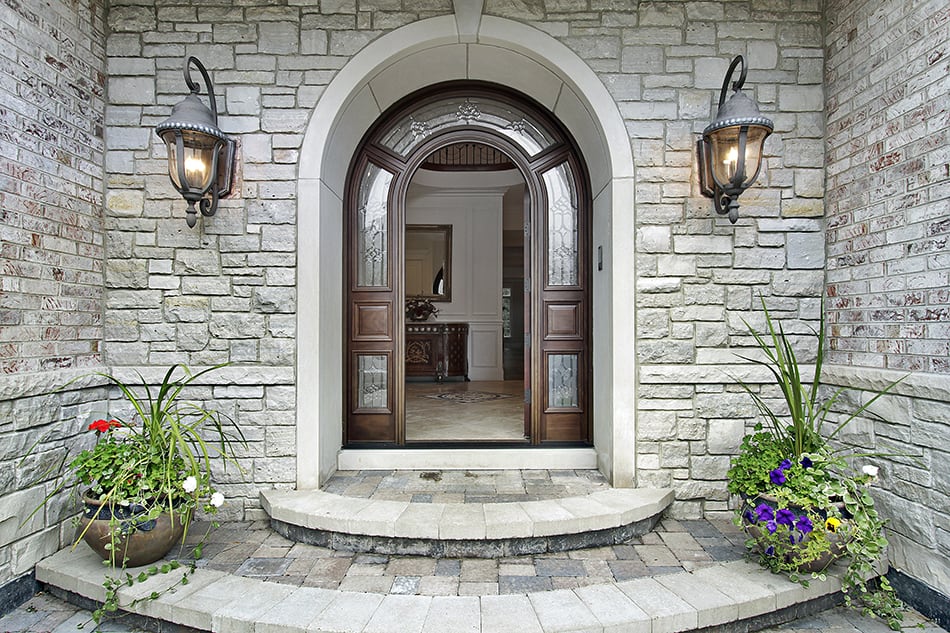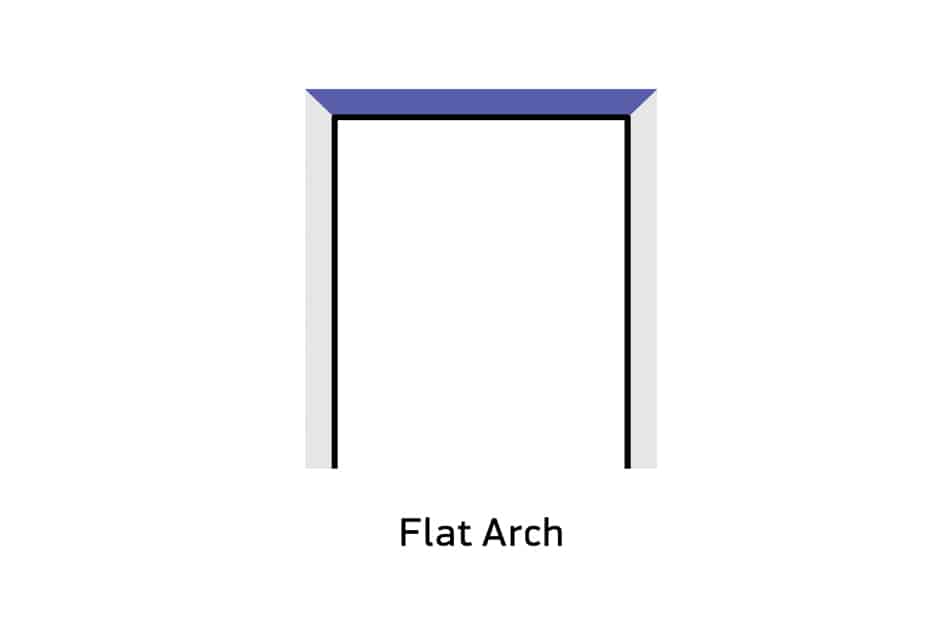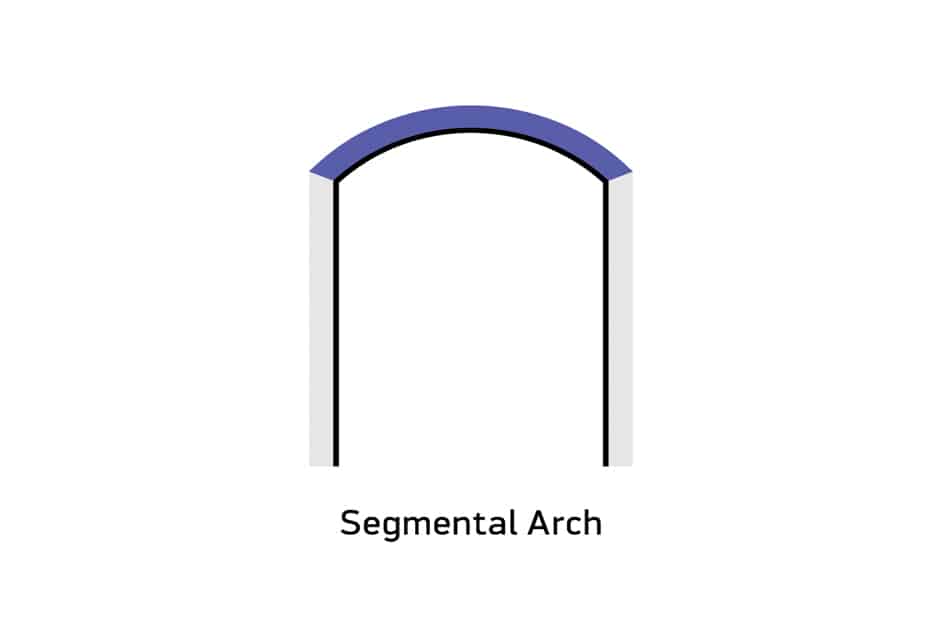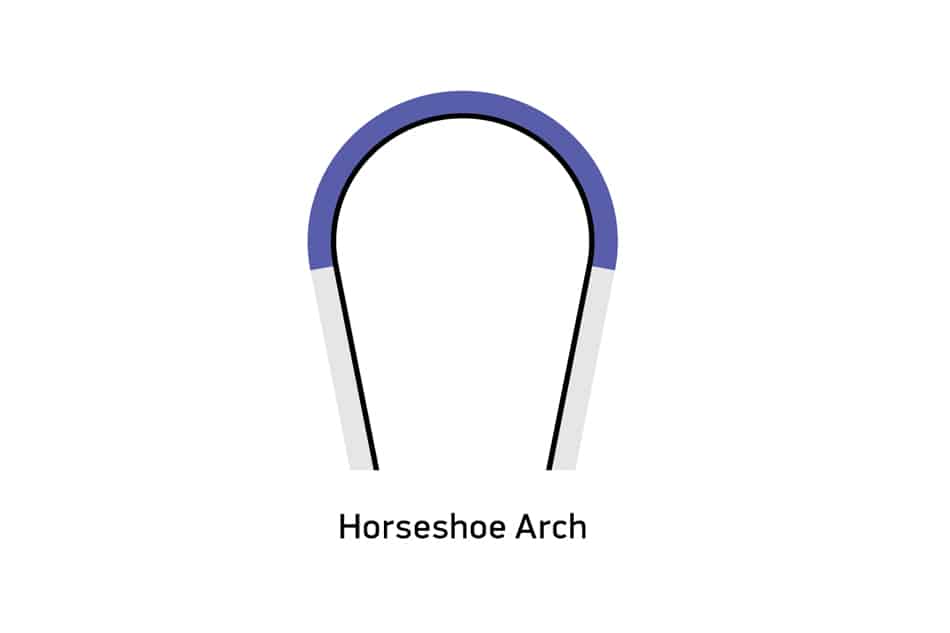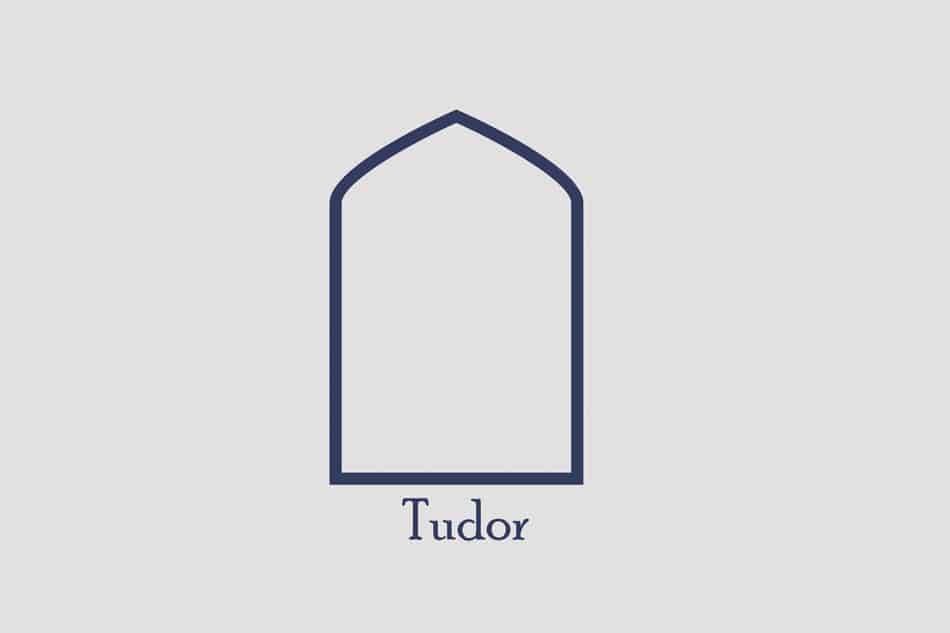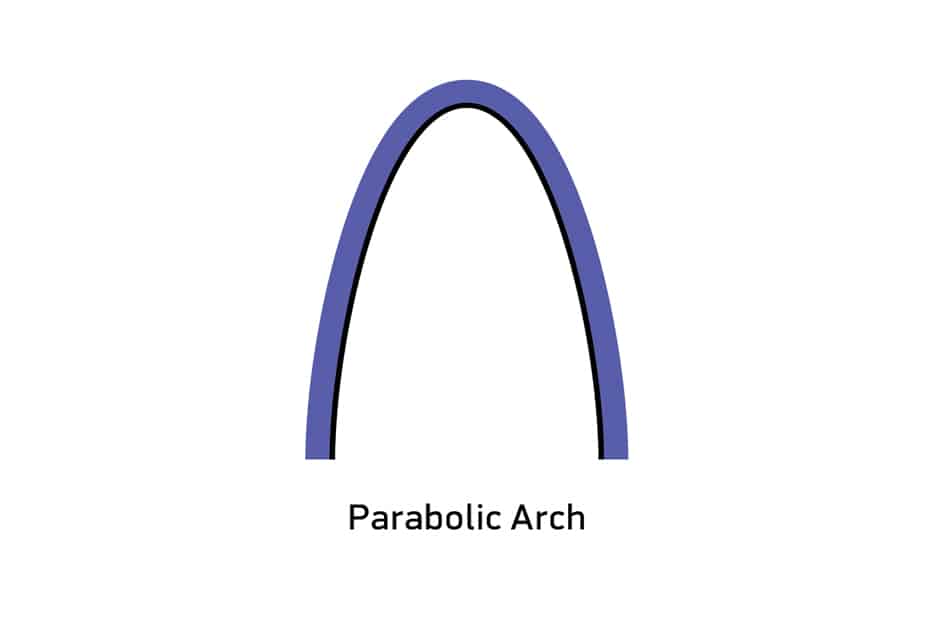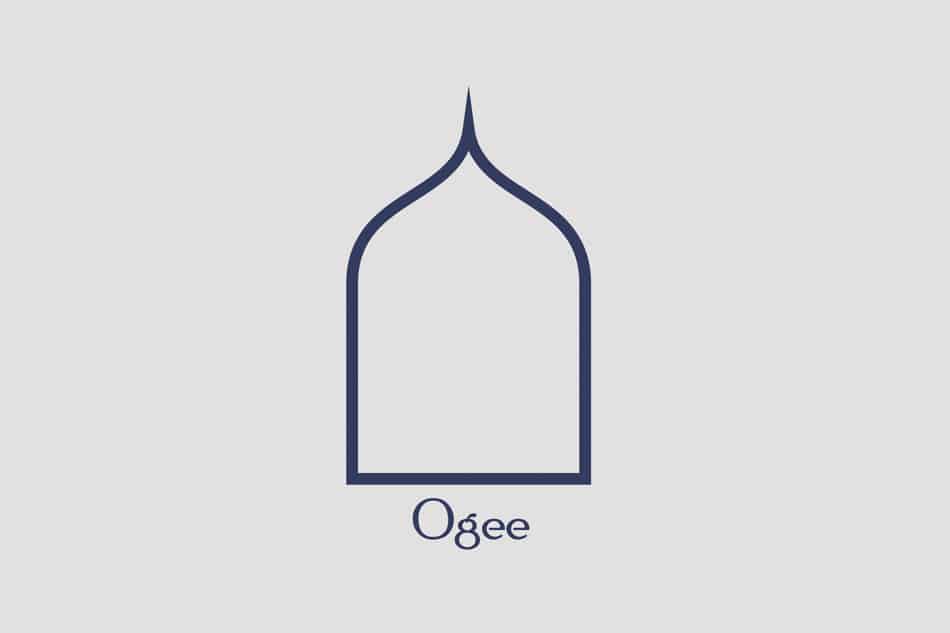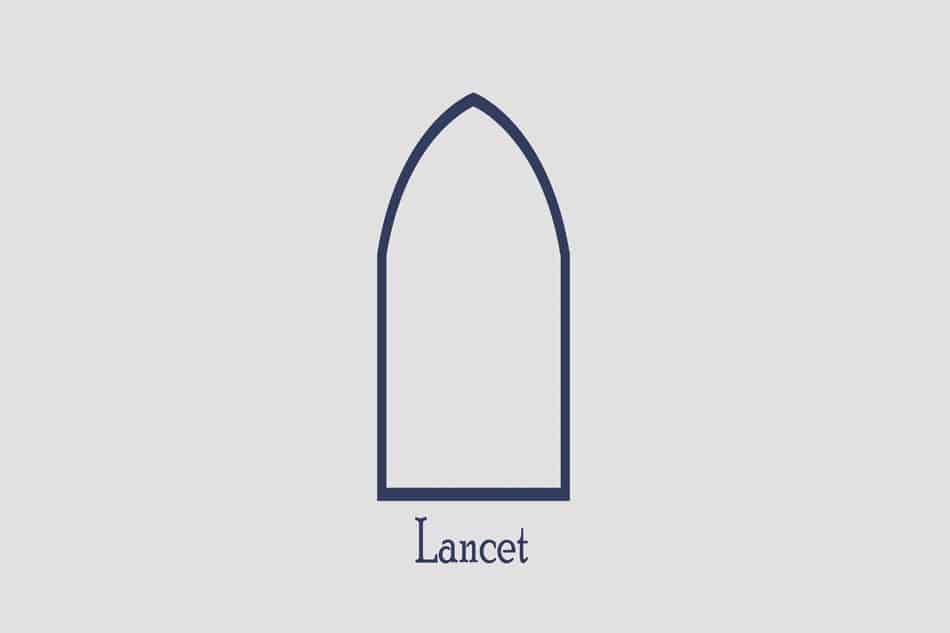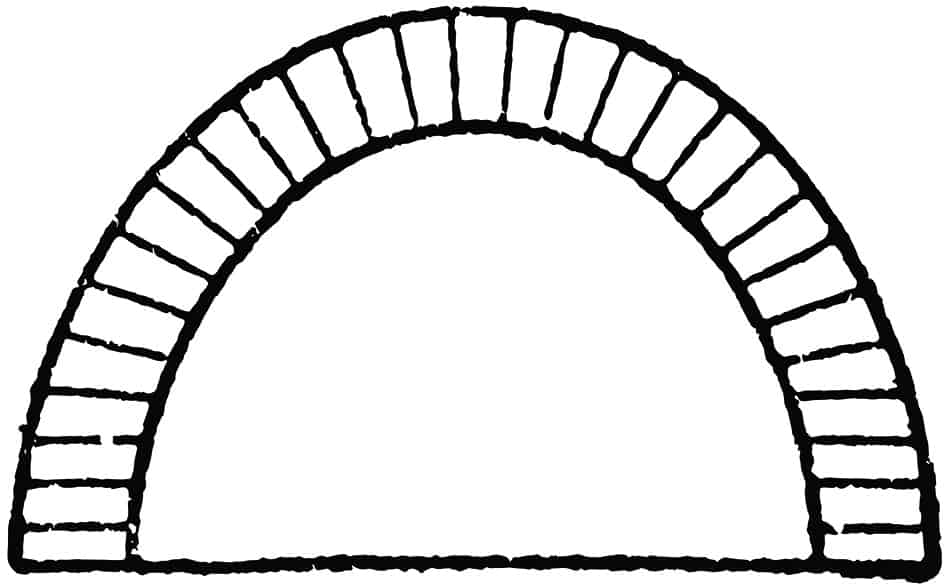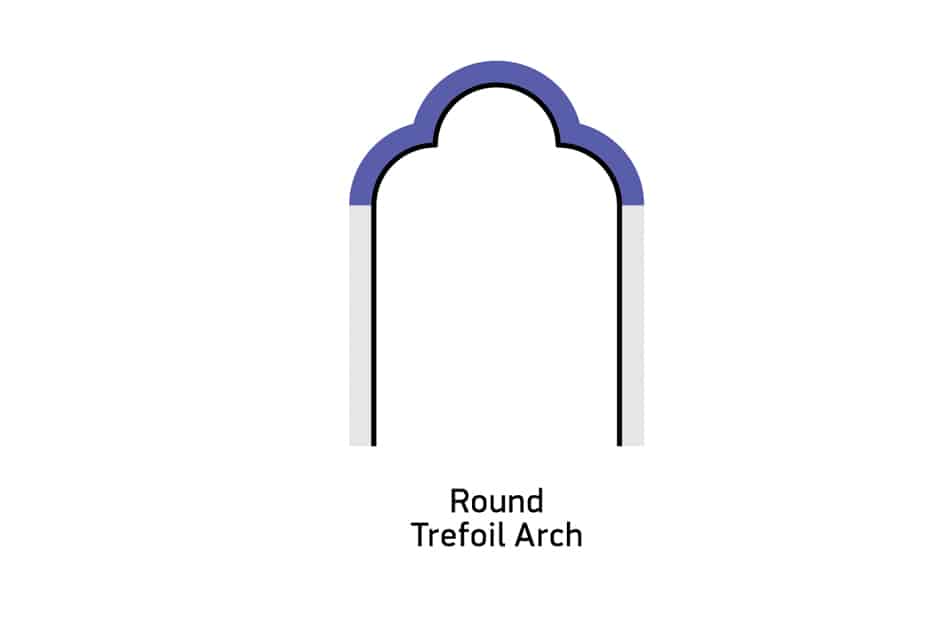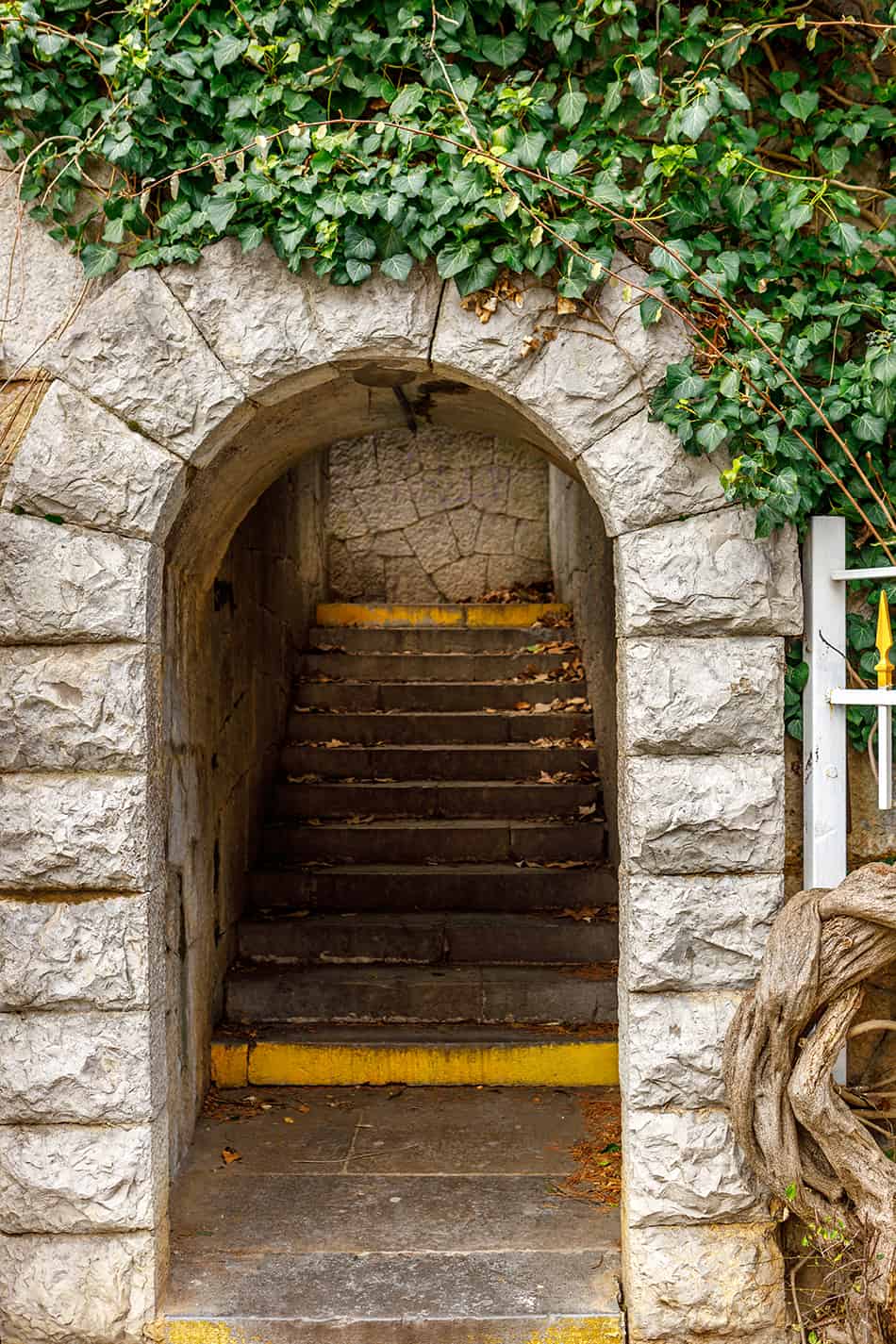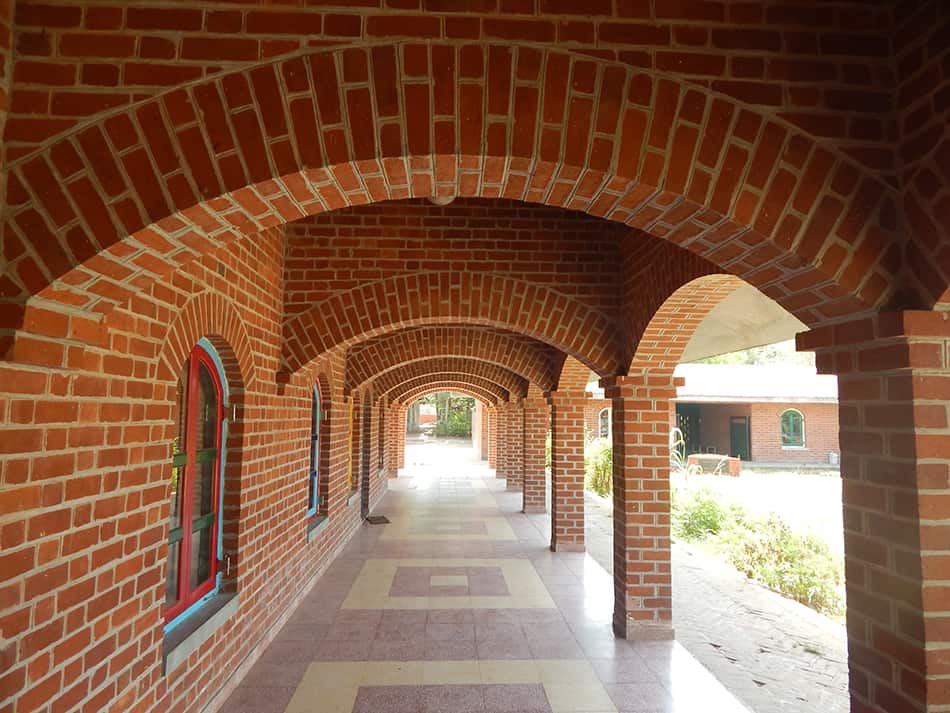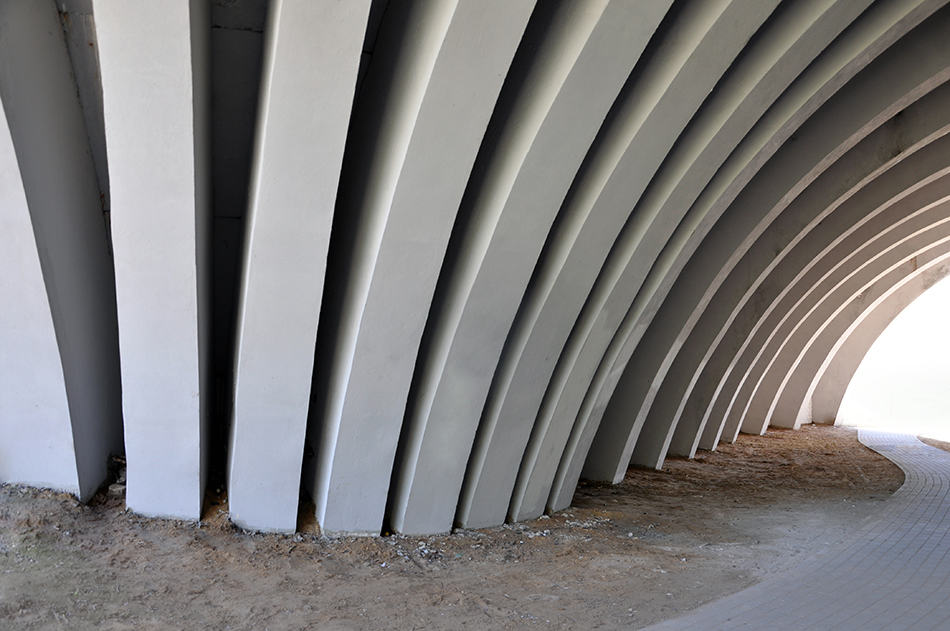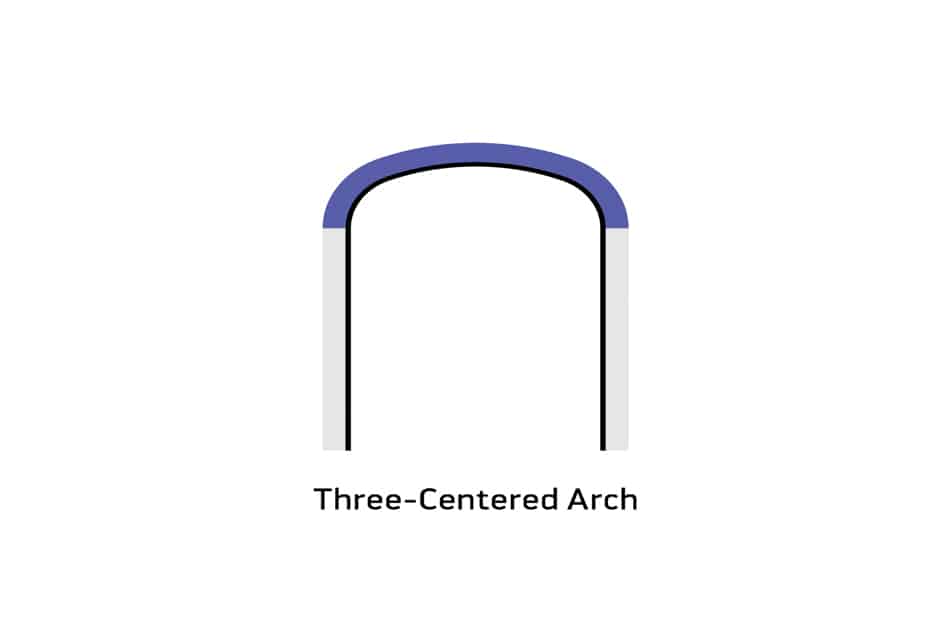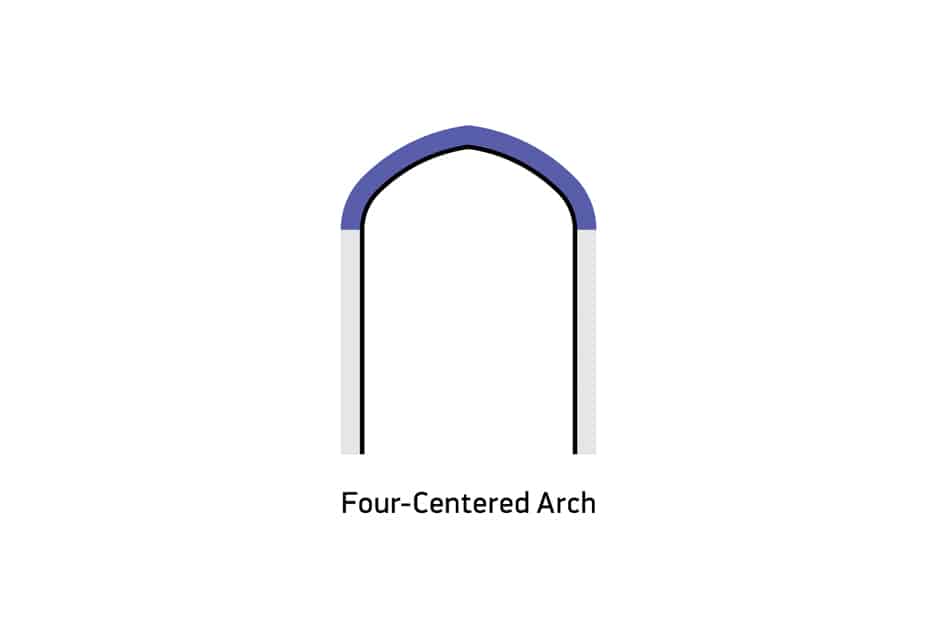An arch is a curved structure that has been used in architecture for thousands of years. While it is not used a lot in everyday construction, it possesses a charm that some spaces require. For its function, it is used to support loads and distribute them evenly. Today, there are a lot of arches used in architecture and home styles, and they can be categorized based on their shape, material, and number of centers. So, what are the different types of arches?
Arch Types Based on Shape
Flat Arch
A flat arch has a curve at its core, which most people don’t notice. This type of arch acts like a base of a triangle that is formed by a horizontal angle. Although its intrados is flat, it has a slight rise, which is about 10 to 15mm per meter width for opening.
A flat arch is usually used to hold light loads, such as above a window. However, it can bear more weight because of the colonnade of pillars and arcade of arched supports. Aside from that, this type of arch often features a cornice or cresting to hide the flat portion of the arch.
Segmental Arch
A segmental arch is one of the strongest types of arches because it can resist thrust. This type of arch is often used for buildings that allow the center of the arch to lie flat under the spring line. Aside from that, this type of arch should have a rise of at least one-eighth of the width of the span to prevent failure.
For its appearance, it has a semi-circle with two columns for support. Even though it has a simple design, it delivers an elegant look. Additionally, this type of arch is often made of stone or wood, but nowadays, it can be made with plasterboards or drywall. Also, an antefix is added near the rood so that the unsightly joint will be hidden. Lastly, it can also be decorated with crockets and dentils to make it look more beautiful.
Horseshoe Arch
A horseshoe arch is commonly used in Islamic architecture. Compared to a semi-circle arch, this type of arch has more curves. To be specific, its curve extends outward from the springing points, forming a horseshoe shape or profile.
Art Nouveau Arch
An Art Nouveau arch is a shallow type of arch. Aside from being elongated, its corners are also curved. Compared to a segmental arch, this type of arch works best for rooms with low ceilings.
The Art Nouveau arch is popular in modern architecture. The reason is that it is flexible and easy to construct. In fact, it can be built without columns. Aside from that, it can also be a great partition because it doesn’t eat a lot of space.
Typically, you will see this type of arch in mansions that don’t have a modern or minimalist design.
Tudor Arch
A Tudor arch is a typical four-centered arch, and it has some similar features to the Art Nouveau arch. The difference is that the arch of a Tudor arch is wide and shallow. Aside from that, it also has more width than height, making it look a bit flattened. Typically, this type of arch works best in rooms with large and low ceilings.
Gothic Arch
A Gothic arch has two circles that meet at the apex, forming either an equilateral or isosceles triangle. Keep in mind that the place where the arcs meet is in the middle, making the arch appear taller.
Gothic arches are popular in the middle ages. As such, it is commonly seen in European cathedrals. Aside from that, this type of arch works well in large rooms with high ceilings.
Roman Arch
A Roman arch looks like a semi-circle, and the skewback is horizontal, while the thrust is vertical. Aside from that, its center lies exactly on the spring line.
A Roman arch is a major feature of Roman architecture. Additionally, it is also typically found in bridges and aqueducts. Also, you can this type of arch in commercial buildings and the various types of homes in the suburbs.
Relieving Arch
A relieving arch is usually built on top of a wooden lintel or flat arch so that it can evenly distribute the weight of the wall. Because of this design, you will be able to replace decayed wooden lintel with ease without disrupting the stability of the whole structure.
Venetian Arch
A Venetian arch has a pointed design; however, its crown is deeper compared to the other types of arches. Aside from that, it also has four centers that are located on the spring line. As such, the band has a wider peak.
Florentine Arch
A Florentine arch has three centers that are located on the springing line. Aside from that, this arch is a hybrid because its inner curve has a semi-circular shape while the rest of the arch looks like a Venetian arch.
Fixed Arch
A fixed arch is typically used in structures with a short span, like reinforced concrete bridges and tunnels. Additionally, this type of arch is also thought to be statically indeterminate because it is subject to additional internal stress. Statically indeterminate means that the static equilibrium is insufficient to ascertain the reactions and internal forces on that structure.
Hinged Arch
A hinged arch has two varieties, a two-hinged arch or a three-hinged arch. This type of arch is typically used to bridge or connect long spans. Because its base has pinned connections, a two-hinged arch can rotate, allowing it to move freely.
The three-hinged arch, on the other hand, is hinged at the base and the middle area. Because of its additional connection, this variety of a hinged arch can move in opposite directions. As such, it is typically used for medium-span structures, such as large buildings and roofs.
Stilted Arch
A stilted arch has a semi-circular curve with two vertical points at the springing. The center is located on the horizontal line, and it goes through the top portion of the vertical points. In this type of arch, the springing line has a good distance on top of the impost, and there is a vertical ornamental or molded member in the space between.
Parabolic Arch
As its name implies, a parabolic arch has a shape of a parabola. Aside from that, it also has a lot of thrust at the base; however, there is also a great space between the two ends of the arch. Because of this feature, this type of arch is typically used in cathedrals, bridges, and other areas of architecture and engineering.
Catenary Arch
A catenary arch has a similar appearance to a parabolic arch; however, its base is a bit flatter. Plus, it rises faster than a parabolic arch.
This type of arch is using the compression force that is created out of its curve. As such, it is able to support itself when standing, and it gets pulled into its shape when it is hanging.
Ogee Arch
An ogee arch has a shape that resembles a letter S, and it has two arcs that curve in opposite directions so that it has parallel ends. This type of arch is a popular design in English architecture during the 13th century.
Lancet Arch
The lancet arch is one of the common features of Gothic architecture during the Early English period. It is a variety of a pointed arch wherein the curves of the arch have a radius that is longer than the arch’s width. As such, it is a narrow arch with a pointed top.
Elliptical Arch
An elliptical arch has an elliptical curve. Sometimes, the curve is not a real ellipse but a combination of circular arcs from three or five centers. As such, its shape is more of half of an ellipse instead of an ellipse.
Trefoil Arch
A trefoil arch has a trefoil. To be specific, it has three rings that overlap each other. This type of arch is commonly used in Christian architecture.
Arch Types Based on Material
Stone Arch
Stone arches have two main categories, which include the following:
Ashlar Arches
Ashlar arches use stones with the proper shape, either tapered or wedge-shaped. These stones are joined together using cement mortar. Ashlar stones are typically used in constructing flat arches.
Rubble Arches
As its name implies, rubble arches are made with rubble stones. Compared to ashlar arches, this type of stone arch is weak. Additionally, they can also be used to construct relieving arches with a depth of about 15 inches. If the depth is above 15 inches, contractors build the relieving arches with two rings. Lastly, this type of stone arch is used for spans up to 3.25 feet.
Brick Arch
Brick arches have various types, including the following:
Axed Brick Arch
An axed brick arch is made with bricks that are shaped into wedges using a brick ax. As such, it is roughly dressed in shape and size. When placed together, the bricks will have pits and gaps that are filled with lime putty. Lastly, it is not pleasant to build an axed brick arch.
Rough Brick Arch
A rough brick arch is made with ordinary bricks. For this reason, this type of brick arch is not attractive, and it is only used internally so that the bricks will not be exposed to the visitors.
Although a rough brick arch is unsightly, it performs well. Aside from that, its outer portion is thick, while the inner part is thinner.
Purpose-Made Brick Arch
In a purpose-made brick arch, the bricks used are manufactured. Plus, they have the same shape and size as the voussoirs. Additionally, this type of arch requires fine workmanship.
Gauged Brick Arch
A gauged brick arch is made with soft bricks that are cut to the same shape and size as the voussoir using a wire saw. Typically, the bricks are put together using lime putty, and all the bricks are dressed finely. Aside from that, it takes a lot of time to decorate the bricks, which shows true craftsmanship.
Concrete Arch
There are various types of concrete arches, including the following:
Monolithic Concrete Block Arch
A monolithic concrete block arch is made with cast-in-situ concrete, and it can be plain or reinforced, depending on the magnitude and span of the loading. Additionally, formwork is typically used for the casting, and the curing will usually last for two to four weeks.
Pre-Cast Concrete Block Arch
The blocks used in constructing a pre-cast concrete block arch are cast in molds. They also have the exact shape and size of voussoirs. Aside from that, special molds are used for the keystone and skewbacks. Overall, this type of arch has a beautiful appearance due to the exact shape and size of the blocks. In some cases, the blocks are mixed with color pigments to imitate the appearance of brownstone.
Steel Arch
Steel arches are considered the strongest and most durable type of arches. Plus, they are flexible in shape and size. This type of arch is often seen in large bridges, and it is usually supported by cables that evenly distribute the weight.
Arch Types Based on the Number of Centers
One-Centered Arch
A one-centered arch has a single center on the springing line. The best examples of this type of arch are semi-circular, flat, and segmental arches.
Two-Centered Arch
When there are two centers on the springing line, the arch is called a two-centered arch. Some examples of this type of arch are gothic and pointed arches.
Three-Centered Arch
As its name implies, a three-centered arch has three centers on the springing line. Typically, arches with an oval, ellipses, or other complicated shapes fall under this category. Some examples are the Florentine arch and semi-elliptical arch.
Four-Centered Arch
Four-centered arches are a staple in English architecture. They have four centers on the springing line. As such, they will most likely have depressed curves that are wide and low. Aside from that, most four-centered arches also have an apex or a pointed top. The best examples of this type of arch are Tudor and Venetian arches.
Five-Centered Arch
Arches with detailed design, like the semi-elliptical arch, can have as many as five centers on the springing line.
